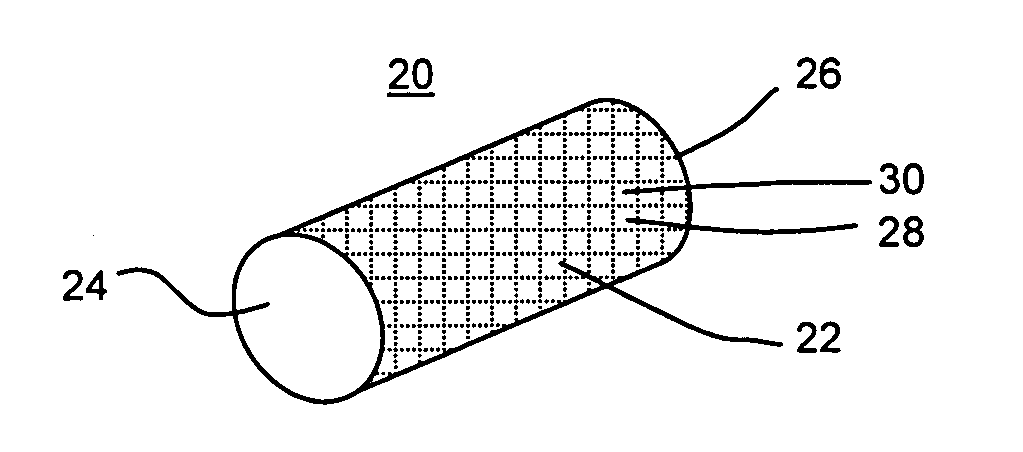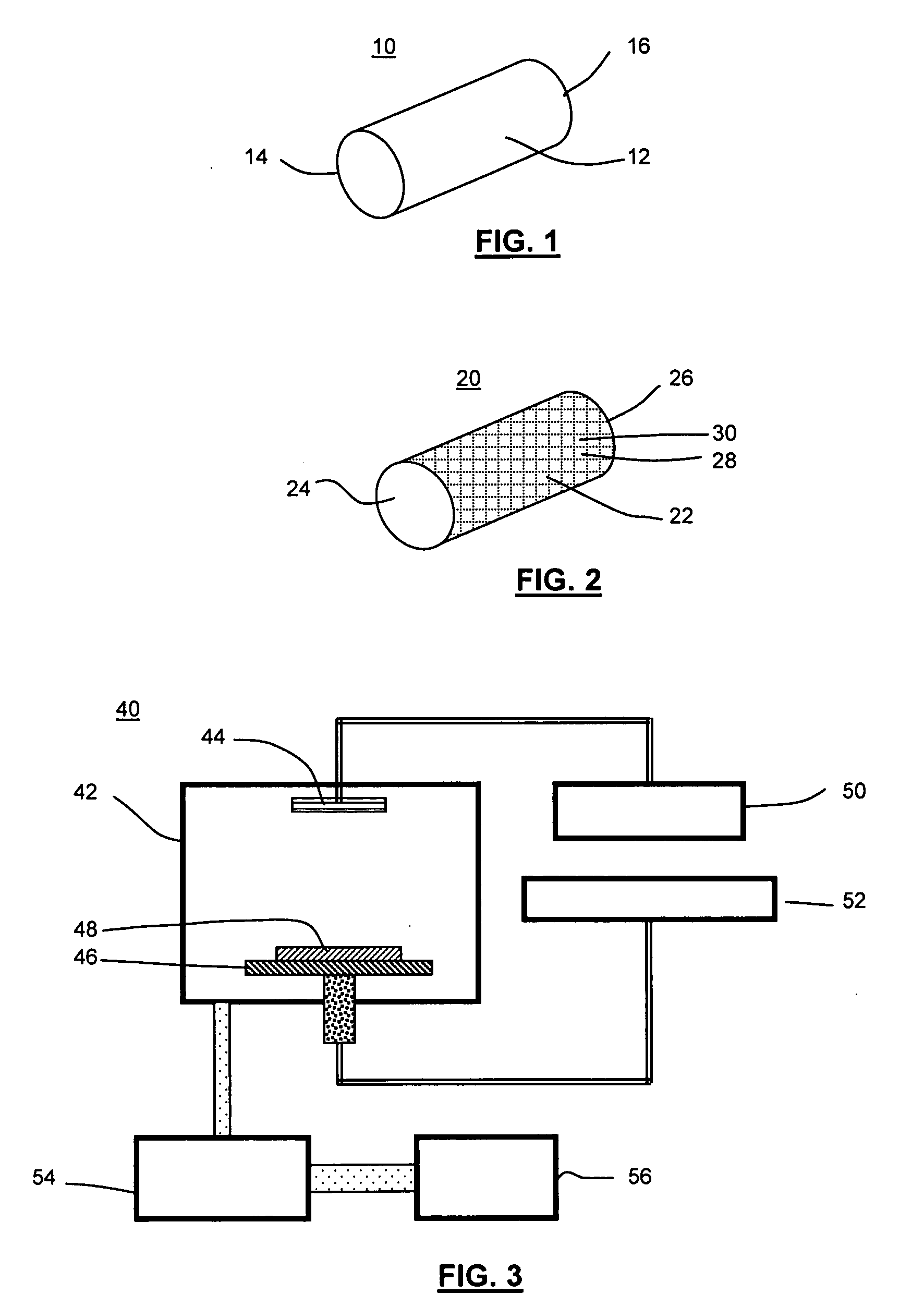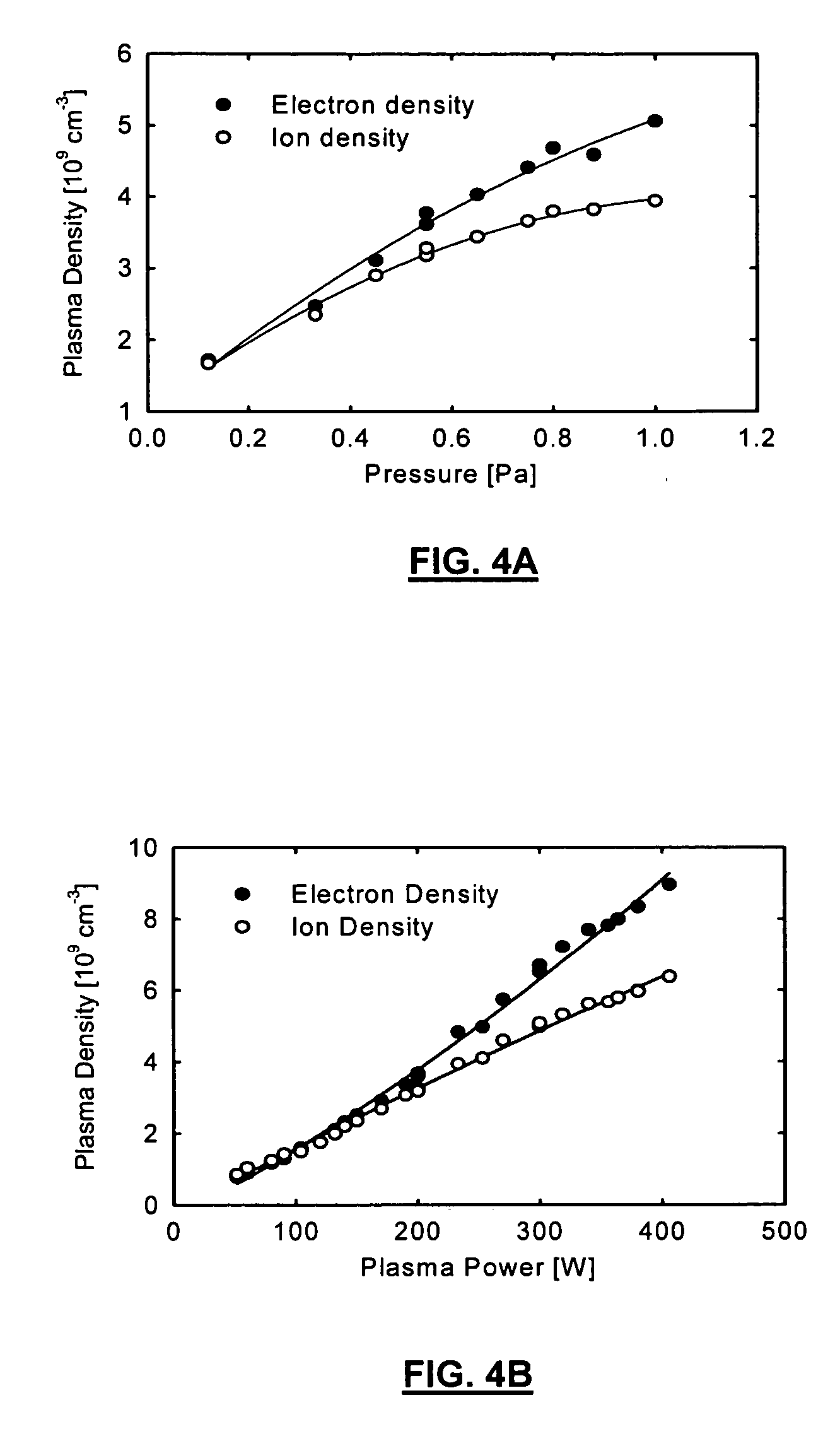Surface modification of ePTFE and implants using the same
a technology applied in the field of surface modification of eptfe and implants using the same, can solve the problems of physiological decay in biological activity, decrease of graft patency, and inability to support endothelialization in vivo
- Summary
- Abstract
- Description
- Claims
- Application Information
AI Technical Summary
Benefits of technology
Problems solved by technology
Method used
Image
Examples
examples
[0070] Plasma immersion ion implantation of nitrogen, oxygen and argon ions with different energies and different regimes of treatment was used for the modification of ePTFE sheets, PTFE thin films and low-density polyethylene (LDPE) films. The PTFE and LDPE samples were used as satellite samples for supporting analysis.
[0071] Materials and Methods
[0072] Materials
[0073] ePTFE provided by Boston Scientific SCIMED was used for plasma immersion ion implantation treatment, structure analysis and for cell culture experiments. PTFE films of 20 μm and LDPE films of 50 μm were used for plasma immersion ion implantation treatment and structure analysis. The PTFE and LDPE films were cleaned by alcohol before plasma immersion ion implantation. The ePTFE samples were not cleaned before plasma immersion ion implantation, but the surface of the samples was not touched after removing from the packing.
[0074] Plasma immersion ion implantation
[0075] Most of the modifications were done with the e...
PUM
| Property | Measurement | Unit |
|---|---|---|
| power | aaaaa | aaaaa |
| pressure | aaaaa | aaaaa |
| depth | aaaaa | aaaaa |
Abstract
Description
Claims
Application Information
 Login to View More
Login to View More - R&D
- Intellectual Property
- Life Sciences
- Materials
- Tech Scout
- Unparalleled Data Quality
- Higher Quality Content
- 60% Fewer Hallucinations
Browse by: Latest US Patents, China's latest patents, Technical Efficacy Thesaurus, Application Domain, Technology Topic, Popular Technical Reports.
© 2025 PatSnap. All rights reserved.Legal|Privacy policy|Modern Slavery Act Transparency Statement|Sitemap|About US| Contact US: help@patsnap.com



